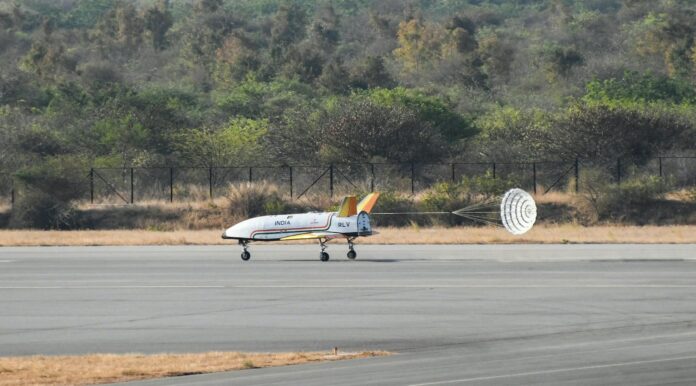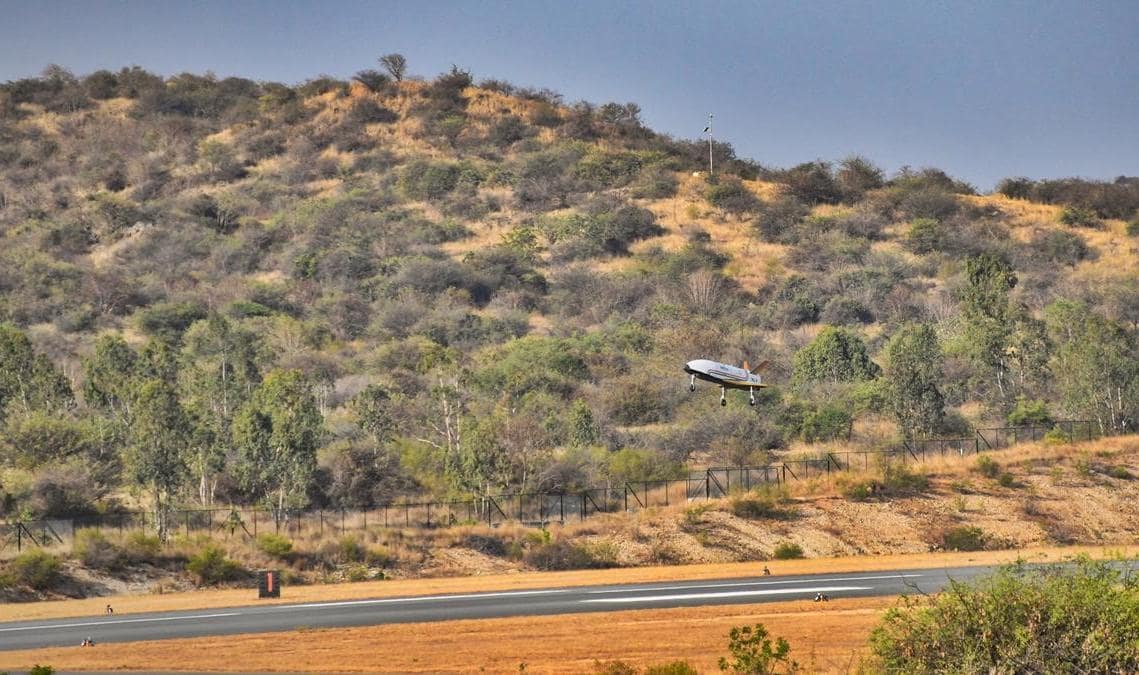
The Indian Space Research Organisation (ISRO) is one step closer to building its own reusable rockets and launch vehicle systems. ISRO successfully conducted the RLV LEX test last Sunday it was an experiment that is being said would propel the country forward in its goal to send reusable rockets & Shuttles into space.
The Indian space agency ISRO conducted the RLV LEX “Reusable Launch Vehicle Landing Experiment” at the Aeronautical Test Range (ATR) of the Defence Research and Development Organisation (DRDO) in Karnataka’s Chitradurga district on 2nd April 2023.
As we know the private space exploration company SpaceX masters the reusable rocket & launch system technology and it is being used for all kinds of manned or unmanned space missions whether it is the company’s projects or NASA‘s projects. Elon Musk the man behind the company SpaceX has proved to the world that the reusable launch system is the only way forward to make space exploration affordable or at least less expensive.
There are also other companies working on similar or different technology to cut the cost of space missions by using reusable Rockets and Launch Vehicles; Apart from SpaceX, Amazon’s space exploration companies like Blue Origin and Virgin Galactic already have Reusable Launch Systems similar to SpaceX and there is another company called SpinLaunch working on mass accelerator technology to launch the Payloads to space.

Indian Space Agency ISRO is very well-known for doing space missions and launching payloads at unbelievably low costs in comparison to other space agencies around the world. Once ISRO will successfully build and start using reusable rockets and launch vehicles then all space mission or Payload launch cost will drop significantly which will directly help the organisation to fund more space exploration missions in future.
Achieving the reusable launch system will be a giant step for India and ISRO since there are a lot many space exploration missions are in pipeline including building India’s own space station which will orbit approximately 400 kilometres above the Earth, where astronauts could stay for 15-20 days.
A Boeing-made Chinook helicopter of the Indian Air Force carried the RLV as an underslung load and flew it to an altitude of 4.5 km. Once the predetermined pillbox parameters were reached, the RLV was autonomously released mid-air, 4.6 km downrange. The RLV then successfully executed the approach and landing maneuver using the Integrated Navigation, Guidance & Control system and autonomously landed on the ATR airstrip at 7.40 am.

ISRO said the experiment was carried out under the exact conditions of a space re-entry vehicle’s landing such as “high speed, unmanned, precise landing from the same return path”.
The RLV LEX mission was extremely important since it was the first time that an Indian spacecraft was able to land successfully without any human assistance. This autonomous landing replicated all of the characteristics of a Space Re-entry Vehicle, including a high landing speed of 350kmph, the absence of a landing crew and precise landing from the same return path.
ISRO is working on more experiments to ensure that the RLV succeeds in payload delivery to low earth orbit, as per ISRO’s expectation the RLV will reduce the cost of the payload delivery process by 80 per cent. The Return Flight Experiment and other related tests of the RLV are also being planned.
RLV’s autonomous approach and landing pic.twitter.com/D4tDmk5VN5
— ISRO (@isro) April 2, 2023



























